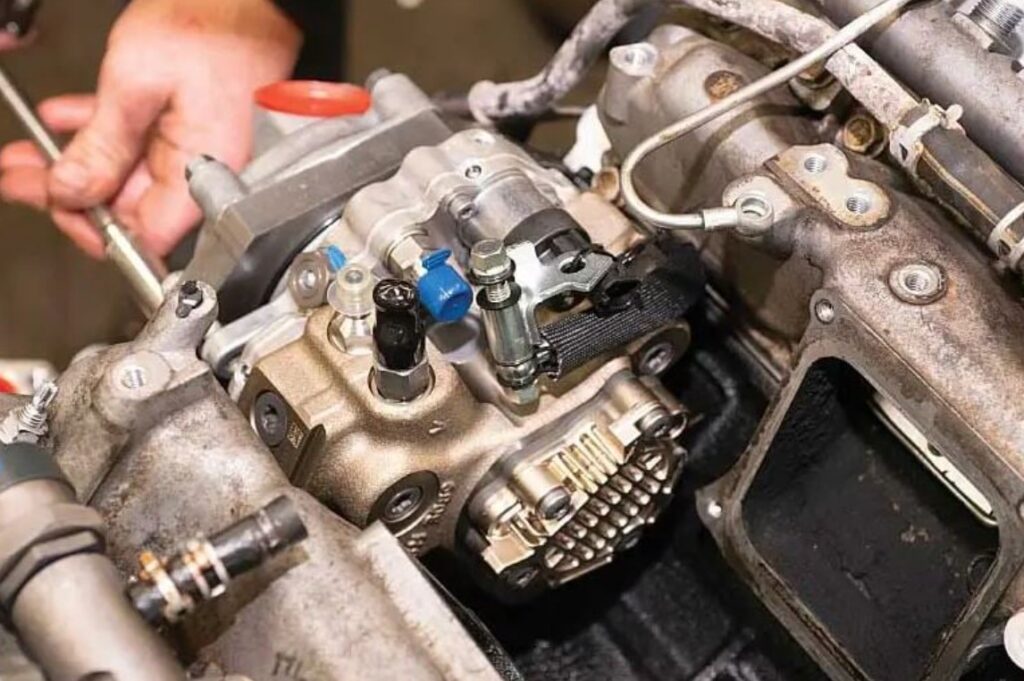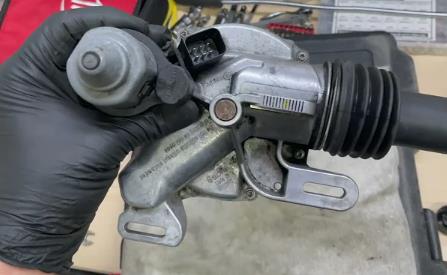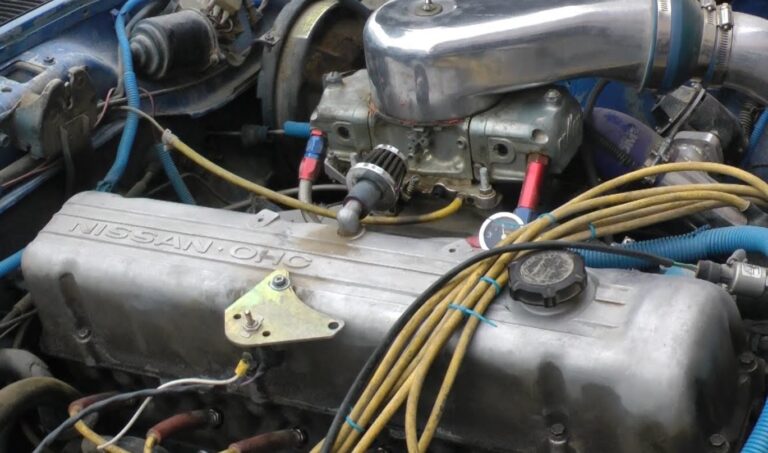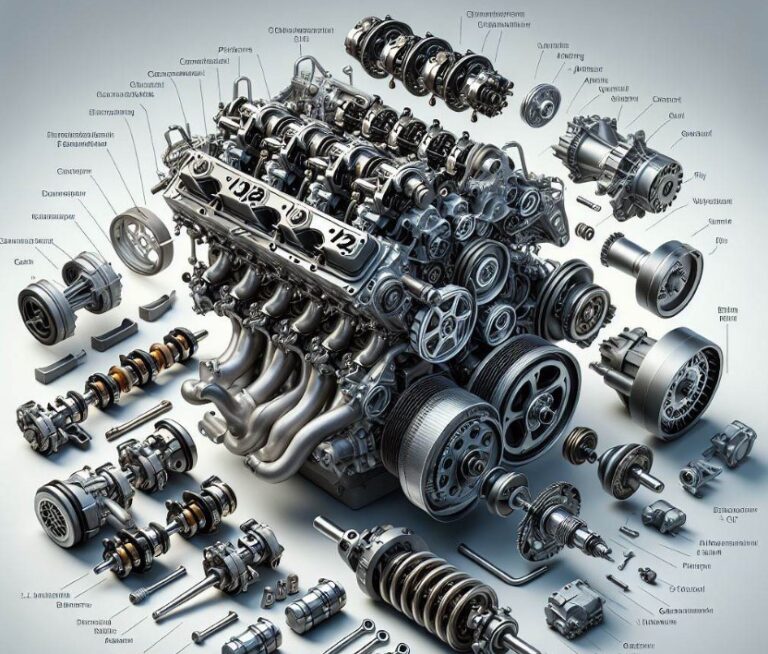5.9 Cummins FCA Symptoms [Causes + Fixed]
This article will explain 5.9 Cummins FCA Symptoms. The 5.9 Cummins Fuel Control Actuator (FCA) plays a pivotal role in your engine’s health. Recognizing its failure symptoms early can save you from costly repairs. This actuator is crucial for regulating fuel pressure, and any malfunction can significantly impact your engine’s performance. In this comprehensive guide, we’ll explore the various symptoms, their causes, and effective solutions to keep your 5.9 Cummins running smoothly.
Key Takeaways
- Identifying common symptoms of a failing Fuel Control Actuator (FCA) in 5.9 Cummins engines.
- Understanding the impact of FCA issues on engine performance.
- Strategies for early detection and maintenance to prevent severe damage.
5.9 Cummins FCA Symptoms

1. Erratic Engine Performance
- Symptom: The engine may experience unexpected power fluctuations, such as surges or power drops. This is often due to the FCA failing to regulate fuel pressure accurately.
- Fix: The solution typically involves replacing the FCA. It’s crucial to use a high-quality replacement part and ensure it’s correctly installed. In some cases, recalibrating the engine control unit (ECU) may also be necessary after the replacement.
2. Unusual Noises from the Fuel System
- Symptom: A failing FCA can cause abnormal sounds like whining or buzzing from the fuel system. These noises are indicative of the actuator struggling to maintain fuel pressure.
- Fix: Replacement of the FCA is usually required. It’s essential to verify that the noise isn’t being caused by other fuel system components before proceeding.
3. Decreased Fuel Efficiency
- Symptom: You may notice a significant decrease in fuel economy, which can be a result of the FCA providing incorrect fuel quantities to the engine.
- Fix: Replacing the FCA should restore fuel efficiency. It’s also advisable to check for other potential issues in the fuel system that might be contributing to the problem.
4. Diagnostic Trouble Codes (DTCs)
- Symptom: The appearance of certain DTCs (like P0251) related to the fuel system can indicate problems with the FCA.
- Fix: After confirming the issue with an OBD-II scanner, replacing the FCA is the most common solution. Ensure that the new actuator is compatible with the 5.9 Cummins engine model.
5. Excessive Smoke Emission
- Symptom: Changes in exhaust smoke color or volume, such as black or blue smoke, can suggest an FCA malfunction, leading to improper fuel combustion.
- Fix: Addressing this issue often requires replacing the FCA. Additionally, it’s important to inspect the injectors and turbochargers, as these components can also cause smoke issues when malfunctioning.
Preventive Maintenance and Regular Checks
To prevent these symptoms, regular maintenance of the fuel system is key. This includes routine checks of the FCA and other components like fuel injectors and filters. Early detection of potential issues can save significant repair costs and prevent downtime.
Professional Assistance
For accurate diagnosis and repair, it’s always recommended to consult with a professional mechanic, especially one experienced with Cummins engines. They can provide expert advice and ensure that repairs are carried out effectively.
Diagnostic Trouble Codes (DTCs)
Modern vehicles equipped with the 5.9 Cummins engine often trigger diagnostic trouble codes when there’s an FCA problem. These codes can be retrieved using a standard OBD-II scanner.

Understanding DTCs Related to FCA
The appearance of specific DTCs can directly point to FCA problems. Codes such as P0251 (Injection Pump Fuel Metering Control) are common indicators of FCA issues.
Importance of Timely Code Analysis
Ignoring these codes can lead to more severe engine problems. Timely analysis and action are essential to prevent further damage to your 5.9 Cummins engine.
Smoke Emission Changes
Changes in exhaust smoke color or volume can also indicate FCA issues. Excessive smoke or unusual colors like blue or black can be a sign of improper fuel combustion, often related to FCA malfunctions.
Analyzing Smoke Color and Volume
Black smoke often signifies rich fuel mixture, while blue smoke can indicate oil burning – both potential results of a faulty FCA. Monitoring these changes is crucial for early diagnosis.
Correlation Between Smoke and FCA Health
Understanding the link between smoke emission and FCA health can help you identify problems before they escalate, ensuring timely intervention and maintenance.
Maintenance and Prevention Strategies
Regular maintenance and early detection are key to preventing severe FCA issues. This includes routine inspections and timely replacements of the FCA when necessary.
Regular Inspection and Diagnosis
Regularly checking the FCA and related components can help catch early signs of wear or failure, allowing for timely repairs or replacements.
Effective Replacement Strategies
When replacement is necessary, choosing quality parts and professional installation is crucial for the longevity of your 5.9 Cummins engine.
What Is An FCA And How Does It Work?
The Fuel Control Actuator (FCA), also known as a fuel pressure regulator, is an essential component in modern diesel engines, particularly in the 5.9 Cummins.

It functions by regulating the amount of fuel that is allowed to flow into the injection pump, thus controlling the pressure and the timing of the fuel injected into the engine.
This regulation is crucial for efficient engine operation, as it ensures the right amount of fuel is delivered under various operating conditions.
The FCA achieves this by receiving signals from the engine control unit (ECU), which determines the required fuel pressure based on various engine parameters.
What Does A Cummins FCA Do?
In a Cummins engine, particularly the popular 5.9L model, the FCA plays a critical role in maintaining engine efficiency and performance. It ensures that the engine receives the optimal amount of fuel, especially under varying load and speed conditions.
By doing so, the FCA helps in achieving a balance between fuel economy and engine power output. A properly functioning FCA contributes to smoother engine operation, reduced emissions, and better overall vehicle performance.
The importance of the FCA in Cummins engines cannot be overstated, as it directly affects the engine’s reliability and longevity.
Source: The role of the FCA in Cummins engines is derived from Cummins’ own documentation and service manuals, which explain the functionality and importance of the FCA in their diesel engines.
What Does A Fuel Pressure Regulator Do On A 5.9 Cummins?
On a 5.9 Cummins engine, the fuel pressure regulator, or FCA, is responsible for maintaining the correct fuel pressure to the engine’s injectors. It adjusts the pressure in the fuel rail based on the engine’s operating conditions, which is vital for achieving optimal combustion.

The fuel pressure regulator ensures that the injectors receive fuel at the correct pressure, which is necessary for the precise timing and atomization of fuel.
This not only improves engine performance but also helps in reducing emissions and enhancing fuel efficiency. The FCA’s ability to adjust fuel pressure dynamically is key to the engine’s adaptability to different driving demands.
Where Is The Fuel Control Actuator On A 5.9 Cummins?
In the 5.9 Cummins engine, the Fuel Control Actuator is typically located on the back of the high-pressure fuel injection pump. This placement is strategic, as it allows the FCA to directly regulate the fuel entering the injection pump.
Accessing the FCA for maintenance or replacement requires some disassembly, as it is not immediately visible on the engine’s exterior. Its location is crucial for its function, as it needs to be close to the fuel injection system to accurately regulate fuel pressure based on the demands of the engine.
Conclusion
Recognizing the symptoms of a failing 5.9 Cummins FCA is essential for maintaining engine health and performance. From fluctuating engine performance to unusual smoke emissions, being vigilant about these signs can save you from extensive repairs and downtime.
Regular maintenance, understanding diagnostic trouble codes, and effective replacement strategies are key to ensuring your engine’s longevity. Remember, early detection and prompt action are your best defenses against FCA-related issues.
Frequently Asked Questions
What is the cost of replacing a 5.9 Cummins FCA?
The cost of replacing an FCA in a 5.9 Cummins engine can vary depending on the labor charges and the price of the replacement part. It’s advisable to get a quote from a trusted mechanic or dealer. Generally, the cost can range from a few hundred to over a thousand dollars, including parts and labor.
Is it possible to repair an FCA, or does it need to be replaced?
In most cases, a faulty FCA needs to be replaced rather than repaired. The intricate nature of this component often repairs impractical or impossible. Replacement with a quality part is the most reliable solution.
Can I drive my vehicle with a faulty FCA?
Driving with a faulty FCA is not recommended as it can lead to poor engine performance, increased fuel consumption, and potentially cause further damage to the engine. It’s best to address the issue as soon as possible.
How often should the FCA be inspected or replaced?
The FCA should be inspected regularly as part of your engine’s routine maintenance. While there’s no universal replacement interval, it’s generally recommended to replace the FCA if any symptoms of failure appear or if diagnostic codes indicate an issue.

Welcome to the exhilarating world of Matt Rex, a professional car racer turned renowned vehicle enthusiast. Immerse yourself in his captivating blog as he shares heart-pounding adventures, expert reviews, and valuable insights on cars, trucks, jets, and more. Fuel your passion for speed and discover the beauty of vehicles through Matt’s engaging stories and meticulous expertise. Join the ever-growing community of enthusiasts who find inspiration and expert advice in Matt Rex’s blog—a digital hub where the thrill of speed meets the pursuit of knowledge.







